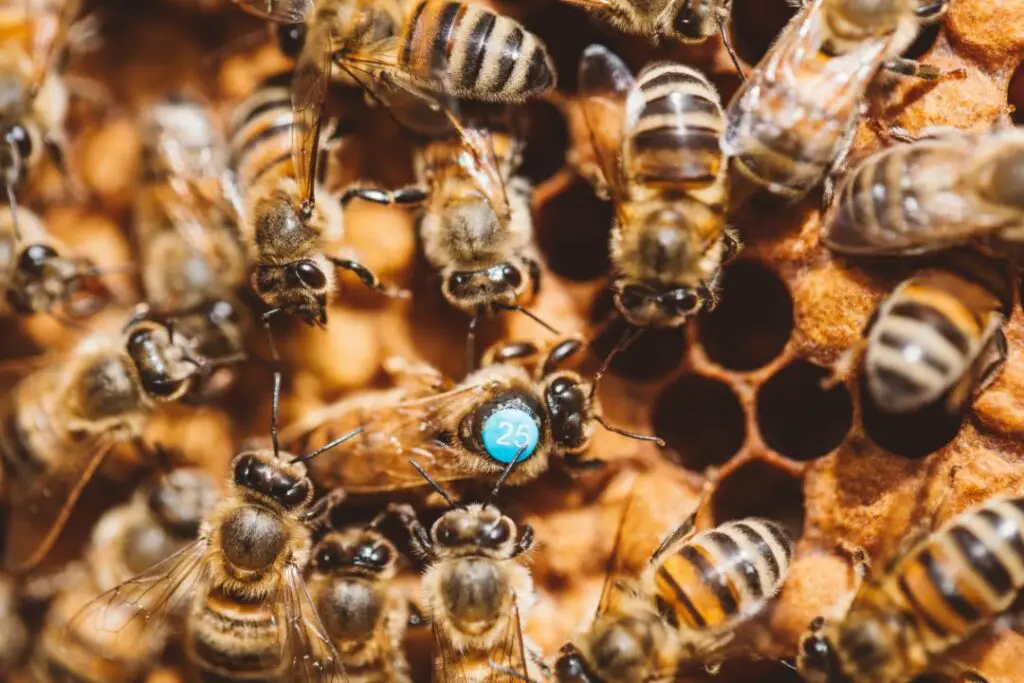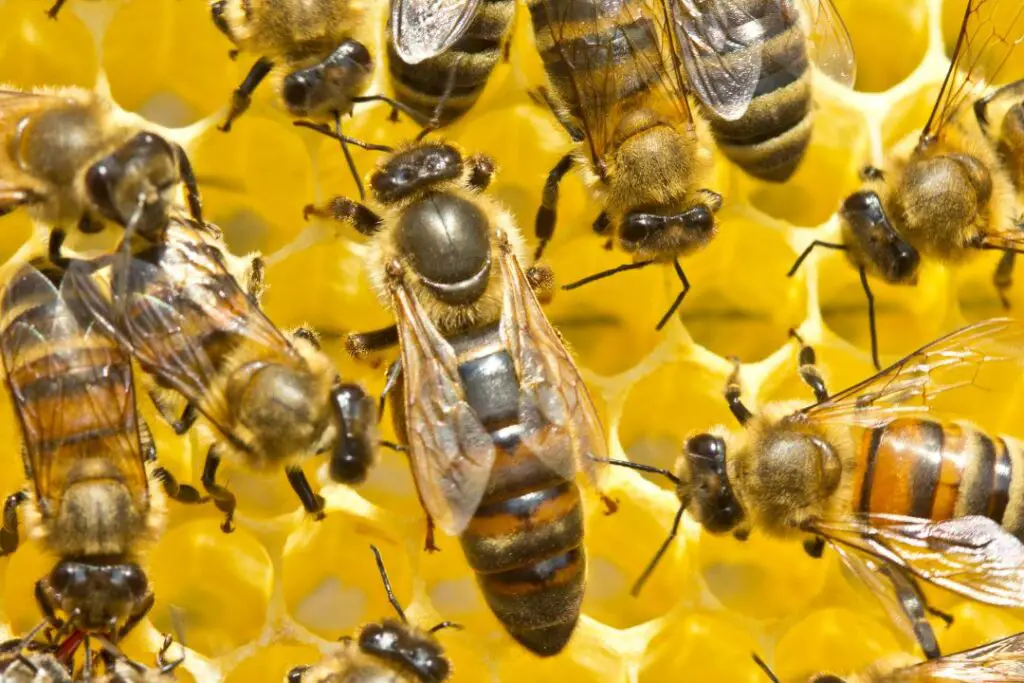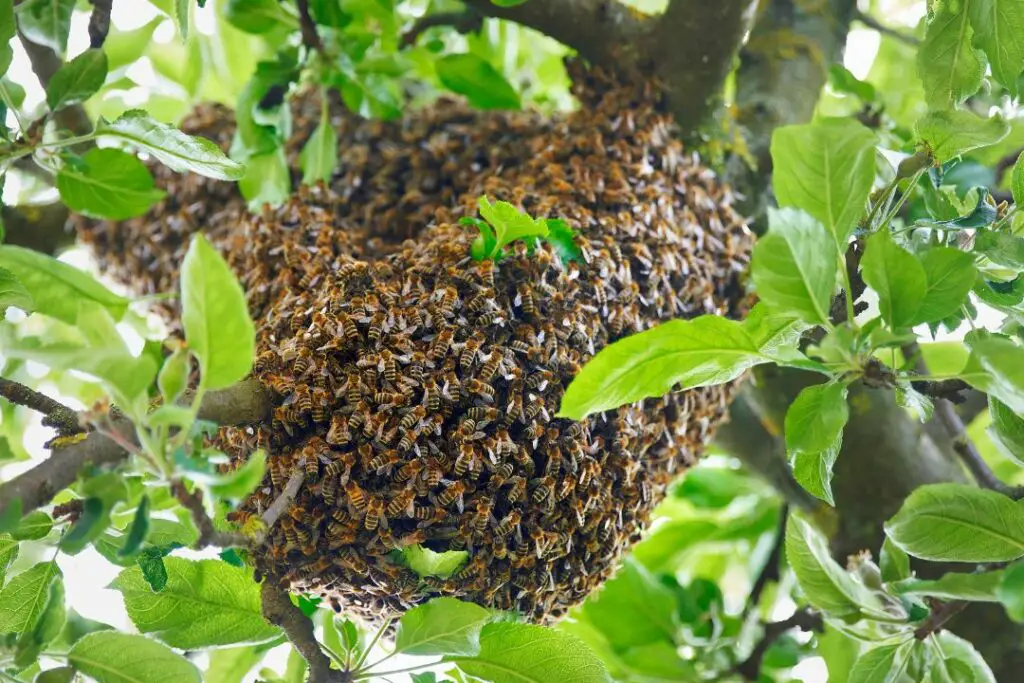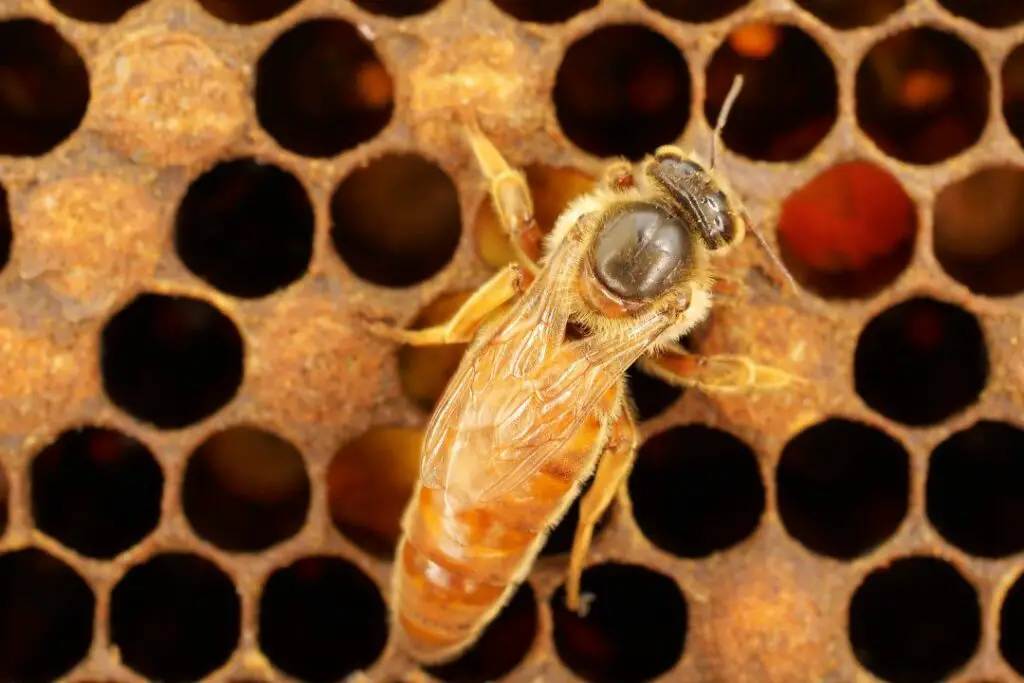The queen is the head of the colony. She controls everything from laying new eggs to orchestrating swarming events.
But the life of a queen bee isn’t without danger. From predators to her kin, her days are always numbered.
Let’s enter the hive alongside royalty to see how these queens rule their hives and navigate the many trials ahead.
Early Life
A new honey bee queen signals a time of change in the hive.
Reigning queens control their subjects using a chemical called queen pheromone.
Without it, workers begin to lose focus, stop foraging and even start to lay their own eggs.
So when the colony senses a drop in this chemical, they quickly plan for the inevitable.
Whether it’s an ageing queen or a swarm, it’s up to the workers to take action to avoid disaster.
Raising a queen
Raising a queen isn’t the same as your average worker bee. They require a strict diet and roomier accommodation.
Nurse bees will construct bigger queen cells from the wax comb. When the queen lays eggs in these cells, they’ll be fed a diet of exclusively royal jelly.
It’s a creamy white secretion produced by young nurse bees and fed to all larvae initially.
But new queens have access throughout their entire early life, helping them grow significantly larger than the other bees.
Up to 20 queens can be fed this nutrient-rich substance, ensuring the best chance of survival for the whole hive.

A Game of Thrones
Roughly 15 to 16 days later, the queens will start to hatch.
They begin using their mandibles to chew away at the wax coating their birth cells.
Nearby workers will sense the queen’s pheromone and come to her aid, helping her to free herself.
There can only be one queen
Next up is the not-so-easy task of finding and dispatching all of her sisters.
She uses a chirping technique to signal to other queens within the hive, initiating a call-back reply.
Already-emerged queens will seek each other out to battle to the death.
The queens still in their cells will be less fortunate. Unable to defend themselves, they’ll be killed nearly instantly.
Supersedure
When a hive swarms, it will be left to the virgin queens to battle for supremacy of the hive and the remaining bees.
But new queens can also hatch when an ageing queen no longer produces enough pheromone.
When this happens, the old queen will have no chance of defending against the younger, well-fed counterpart, quickly succumbing to repeated stings.

How Do Queen Bees Mate?
Next up, the new queen needs to take a mating flight if she wants to be able to lay fertilized eggs.
It’s not as simple as mating with drones (male bees) from her hive.
Drones from different hives contribute to a robust genetic mix, helping the colony to resist diseases and adapt to ever-changing environments.
Mating flights
When the weather is just right (warm and without strong winds), the virgin queen leaves the hive.
The queen ascends to a ‘drone congregation area’, where male drones wait in the hope of fulfilling their single purpose of mating with a queen.
In mid-air, the queen mates with multiple drones, collecting enough sperm to fertilize eggs for the rest of her life.
Sadly, this means the end of the road for the successful drones. When they mate, their reproductive organs and associated abdominal tissues are physically pulled out of their bodies, leading to a fatal injury.
The Role Of The Queen Bee
Once the new queen has secured her reign and completed her reproductive duties, it’s time to start ruling over the sometimes thousands of worker bees in the colony.
Let’s look at what life in the hive is like with a reigning queen honey bee.
| Time of Day | Queen Bee’s Activity |
|---|---|
| Morning | She begins her egg-laying circuit, inspecting cells. |
| Midday | Continues laying eggs, with short breaks for grooming and feeding. |
| Afternoon | Egg-laying goes on, and workers constantly tend to her. |
| Evening | She slows down as the hive activity diminishes. |
Egg laying
The queen’s primary role in the colony is laying eggs.
And she’s no slouch, laying up to 2,000 eggs daily to bulk up the hive or nest population.
She’ll work around the honeycomb, depositing eggs into cells to add to the brood.
Her abdomen extends into the cell to ensure the egg is placed at the bottom before capping (a process where nurse bees seal the cell with wax).
She decides whether to fertilize the egg or not. If fertilized, the egg will develop into a female worker bee or potentially a new queen. If not, it will become a male drone.
This process is repeated hundreds to thousands of times daily during her peak laying periods.
Pheromone Release
Queen pheromones, often referred to as “queen substance,” play a crucial role in the smooth operation of a bee colony.
These pheromones are released into the hive as she moves around or is groomed by worker bees.
The worker bees help to spread the pheromones as they physically interact with the queen and then with each other.
Worker bees constantly monitor the level of queen pheromones, which helps them recognize if the queen’s health is declining or if she’s missing.
Eating
While a queen bee is busy laying eggs, she doesn’t have to worry about feeding herself.
The worker bees take care of that. They feed her a substance called “royal jelly,” a nutrient-rich secretion from the glands of nurse bees.
As she moves through the hive, the workers follow her, ensuring she has the continuous nourishment to maintain her energy-intensive egg-laying process.
This teamwork allows the queen to focus on her critical role without the distraction of seeking out food.
Swarming
Swarming is a natural means of colony reproduction, typically triggered when a hive becomes overcrowded, resources are plentiful, or an ageing queen is no longer producing enough pheromones.
The existing queen will leave the original hive with a large group of worker bees, allowing a new queen to take over.
Before departing, the queen’s egg-laying may slow down as she lightens up to fly more efficiently.
The swarm, with the old queen at the helm, will seek a new location to establish a new colony.
This ensures the continuation and expansion of the bee population, as well as the genetic diversity of the species.

Lifespan Of A Queen
The lifespan of a queen bee is remarkably longer than that of her worker bees and drones.
Typically, a queen bee can live for three to four years, a significant contrast to the worker bees, who live for only six weeks during the busy summer months but can survive for several months during the less active winter.
Drones, on the other hand, have the shortest life span; they live for about eight weeks and die shortly after mating if they survive that long.
The queen’s extended lifespan allows her to lay hundreds of thousands of eggs over her lifetime, ensuring the continuity and growth of the colony over multiple seasons.
In Conclusion
Now we know a colony of honey bees is nothing without its matriarch, the queen bee.
She is responsible for supporting the colony continuously, laying eggs and controlling her subjects.
Without a reigning queen, bees will lose direction and stop foraging or caring for the brood, and the colony may collapse.
These insects play a pivotal role in pollination worldwide, and without the queen bee, we may not have any flowers at all.




